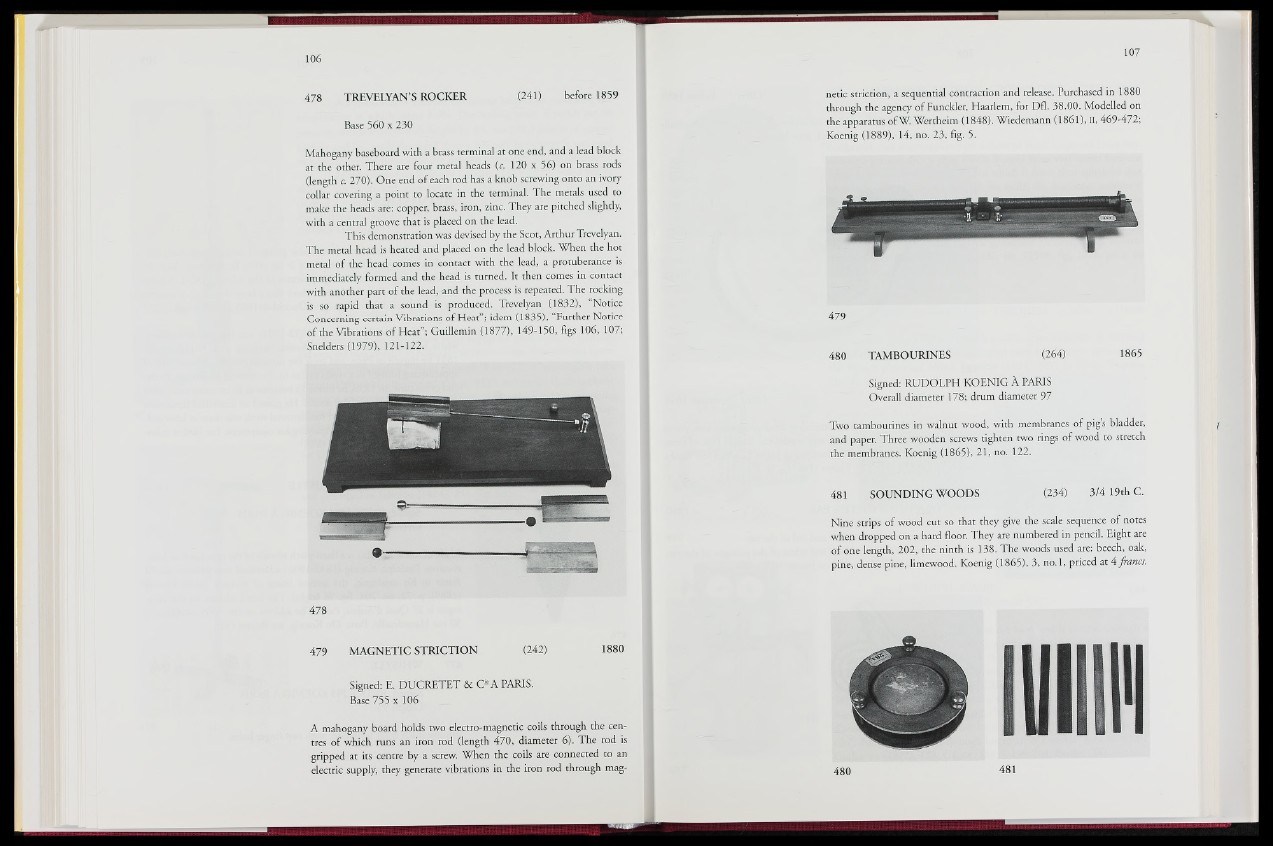
478 TREVELYAN’S ROCKER (241) before 1859
Base 560 x 230
Mahogany baseboard with a brass terminal at one end, and a lead block
at the other. There are four metal heads (c. 120 x 56) on brass rods
(length c. 270). One end of each rod has a knob screwing onto an ivory
collar covering a point to locate in the terminal. The metals used to
make the heads are: copper, brass, iron, zinc. They are pitched slightly,
with a central groove that is placed on the lead.
This demonstration was devised by the Scot, Arthur Trevelyan.
The metal head is heated and placed on the lead block. When the hot
metal of the head comes in contact with the lead, a protuberance is
immediately formed and the head is turned. It then comes in contact
with another part of the lead, and the process is repeated. The rocking
is so rapid that a sound is produced, Trevelyan (1832), “Notice
Concerning certain Vibrations of Heat ; idem (1835), Further Notice
of the Vibrations of Heat”; Guillemin (1877), 149-150, figs: 106, 107;
Snelders (1979), 121-122.
478
479 MAGNETIC STRICTION (242) 1880
Signed: E. DUCRETET & CkA PARIS.
Base 755 x 106
A mahogany board holds two electro-magnetic coils through the centres
of which runs an iron rod (length 470, diameter 6). The rod is
gripped at its centre by a screw. When the coils are connected to an
electric supply, they generate vibrations in the iron rod through magnetic
striction, a sequential contraction and release. Purchased in 1880
through the agency of Funckler, Haarlem, for Dfl. 38.00. Modelled on
the apparatus ofW. Wertheim (1848). Wiedemann (1861), II, 469-472;
Koenig (1889), 14, no. 23, fig. 5.
479
480 TAMBOURINES (264) 1865
Signed: RUDOLPH KOENIG À PARIS
Overall diameter 178; drum diameter 97
Two tambourines in Walnut wood, with membranes of pig’s bladder,
and., paper. Three wooden screws tighten two rings of wood to stretch
the membranes. Koenig (1865), i® no. 122.
481 SOUNDING WOODS (234) 3/4 19th C.
Nine strips of wood cut so that they give the scale sequence of notes
when dropped on a hard floor. They are numbered in pencil. Eight are
of one length, 202, the ninth is 138. The woods used are: beech, oak,
pine, dense pine, limewood. Koenig (1865), 3, no.l, priced at 4 francs.